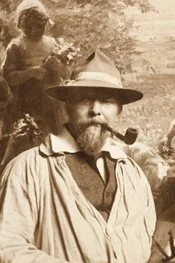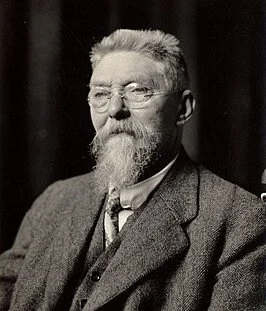Evert Pieters
Evert Pieters was born on December 11, 1856, in the vibrant city of Amsterdam. He dedicated his formative years to studying at the prestigious Academy of Amsterdam and under the guidance of Thomas Verstraete in the charming town of Brasschaat in Belgium. Pieters initially worked and resided in Amsterdam until 1874, after which he relocated to Den Haag (Holland) in that same year. By 1876, he returned to Amsterdam, where he remained until 1879. His artistic journey was characterized by a continuous series of relocations: he spent time in Antwerp from 1879 to 1880, and then moved to the picturesque fishing village of Volendam, followed by Haarlem, where he lived until 1895. From 1896 to 1897, he ventured to the artistic hub of Paris, then journeyed to Blaricum until 1905, Katwijk until 1908, and back again to Blaricum until 1917. Eventually, he settled in the idyllic town of Laren, where he passed away unexpectedly while riding in a taxi from Baarn to Laren.
Until the age of 19, Pieters diligently studied painting at home before venturing to Antwerp as a scenery painter. He enhanced his skills by taking night classes with the esteemed Charles Verlat for two full years and later studied under Thomas Verstraet. His artistic oeuvre encompassed the painting, drawing, and sketching of landscapes, yet he achieved significant acclaim for his evocative interior scenes in Laren and enchanting beach scenes populated by fishermen. Pieters showcased his illustrious work at art exhibitions in Amsterdam from 1895 to 1905, in Maastricht in 1896, and in Arnhem in 1901. His talent garnered him several prestigious accolades, including a Gold Medal at the Paris Salon in 1896, another medal at an exhibition in Barcelona in 1898, and a monetary award at the l’Exposition Universelle of 1900 in Paris. During the challenging times of World War I, he took a sojourn to London, where he further refined his craft.
After his return to Holland, Pieters’ artistic style continued to evolve compellingly, leaning towards more atmospheric expressions and the use of vibrant, brighter colors. The major themes of his landscapes predominantly featured scenes from the Campine, a natural region primarily found in northeastern Belgium and parts of southwestern Netherlands, characterized by its expansive moors, sandy heathlands, and wetlands, as well as picturesque settings throughout Holland.

